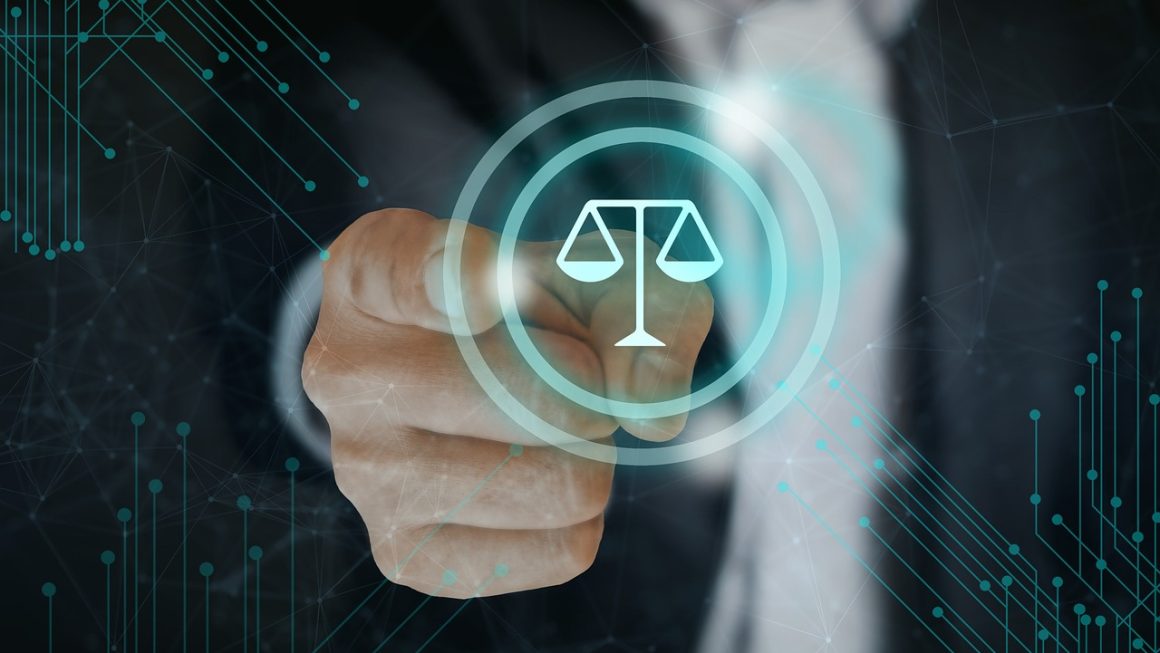Navigating the intricate world of business requires more than just a good idea and a solid business plan. Understanding the legal framework that governs your operations is critical for success, compliance, and long-term sustainability. Business law encompasses a broad spectrum of regulations that dictate how companies are formed, managed, and interact with employees, customers, and other entities. Ignoring these laws can lead to costly penalties, legal disputes, and even the closure of your business. This guide provides a detailed overview of key areas within business law, empowering you to make informed decisions and protect your company’s interests.
Understanding Business Structures and Formation
Choosing the right business structure is one of the most fundamental decisions an entrepreneur must make. The structure you select will significantly impact your liability, taxation, and administrative requirements. It’s wise to consult with both a legal professional and a tax advisor to determine the best fit for your specific circumstances.
Sole Proprietorship
- Definition: A business owned and run by one person, where there is no legal distinction between the owner and the business.
- Advantages: Simplest form of business to establish, minimal paperwork, direct control, and profits are taxed as personal income.
- Disadvantages: Unlimited personal liability for business debts, raising capital can be challenging, and the business ceases to exist upon the owner’s death.
- Example: A freelance graphic designer operating under their own name is a sole proprietor.
Partnership
- Definition: A business owned and operated by two or more individuals who agree to share in the profits or losses of the business.
- Advantages: Relatively easy to establish, access to more capital than a sole proprietorship, and partners can pool their skills and expertise.
- Disadvantages: Partners share unlimited liability (unless a limited partnership is formed), potential for disagreements between partners, and profits are taxed as personal income.
- Types: General partnership (all partners share liability), limited partnership (one or more partners have limited liability).
- Example: A law firm where multiple lawyers share in the profits and losses of the firm operates as a partnership.
Limited Liability Company (LLC)
- Definition: A hybrid business structure that combines the pass-through taxation of a partnership or sole proprietorship with the limited liability of a corporation.
- Advantages: Limited personal liability for business debts, flexible management structure, and pass-through taxation (profits taxed at the individual level).
- Disadvantages: More complex to set up than a sole proprietorship or partnership, and may be subject to self-employment taxes.
- Example: A small marketing agency where the owners want personal liability protection might choose to form an LLC.
Corporation
- Definition: A legal entity separate and distinct from its owners (shareholders). It can own property, enter into contracts, and be sued.
- Advantages: Limited liability for shareholders, easier to raise capital through the sale of stock, and perpetual existence (it can continue to exist even if ownership changes).
- Disadvantages: More complex and expensive to set up and maintain than other business structures, subject to corporate income tax (and potentially double taxation if profits are distributed as dividends).
- Types: S Corporation (pass-through taxation), C Corporation (subject to corporate income tax).
- Example: Large publicly traded companies like Apple and Microsoft are C Corporations.
Contracts: The Foundation of Business Relationships
Contracts are legally binding agreements that define the rights and obligations of the parties involved. A well-drafted contract is crucial for mitigating risk and ensuring that all parties understand their responsibilities.
Essential Elements of a Valid Contract
- Offer: A clear and definite proposal to enter into an agreement.
- Acceptance: Unconditional agreement to the terms of the offer.
- Consideration: Something of value exchanged between the parties (e.g., money, goods, services).
- Capacity: Legal ability to enter into a contract (e.g., being of legal age and sound mind).
- Legality: The purpose of the contract must be legal and not violate public policy.
Types of Contracts
- Sales Contracts: Agreements for the sale of goods. Governed by the Uniform Commercial Code (UCC) in many jurisdictions.
- Service Contracts: Agreements for the performance of services.
- Employment Contracts: Agreements between employers and employees outlining the terms of employment.
- Lease Agreements: Agreements for the rental of property.
- Non-Disclosure Agreements (NDAs): Agreements to protect confidential information.
Breach of Contract
- Definition: Failure to perform the obligations outlined in the contract.
- Remedies: Damages (monetary compensation), specific performance (court order requiring the breaching party to fulfill the contract), rescission (cancellation of the contract).
- Example: If a supplier fails to deliver goods as agreed in a sales contract, the buyer may be entitled to damages to cover the cost of obtaining the goods from another supplier.
Practical Tip:
Always put contracts in writing. Verbal agreements can be difficult to prove in court. Ensure all terms are clearly defined and understandable. Seek legal advice before signing any contract, especially complex agreements.
Intellectual Property Protection
Protecting your intellectual property (IP) is crucial for maintaining a competitive advantage and preventing others from profiting from your creations. IP includes inventions, trademarks, copyrights, and trade secrets.
Trademarks
- Definition: A symbol, design, or phrase legally registered to represent a company or product.
- Purpose: Distinguishes goods or services from those of others.
- Registration: Obtain trademark protection by registering with the United States Patent and Trademark Office (USPTO).
- Example: The Nike swoosh logo is a registered trademark.
Copyrights
- Definition: Legal protection granted to authors of original works of authorship, including literary, dramatic, musical, and certain other intellectual works.
- Protection: Protects the expression of an idea, not the idea itself.
- Registration: Registering with the U.S. Copyright Office creates a public record and strengthens your legal rights.
- Example: The lyrics and melody of a song are protected by copyright.
Patents
- Definition: Exclusive rights granted for an invention, allowing the patent holder to exclude others from making, using, or selling the invention for a specific period.
- Types: Utility patents (for new and useful inventions), design patents (for ornamental designs), plant patents (for new and distinct plant varieties).
- Requirements: The invention must be new, useful, and non-obvious.
- Example: A pharmaceutical company that develops a new drug obtains a patent to protect its exclusive rights to manufacture and sell the drug.
Trade Secrets
- Definition: Confidential information that gives a business a competitive edge.
- Protection: Trade secrets are protected as long as they remain confidential and provide a competitive advantage.
- Examples: Formulas, recipes, customer lists, pricing strategies.
- Example: The formula for Coca-Cola is a well-known trade secret.
Practical Tip:
Conduct thorough trademark searches before launching a new product or service. Implement strong confidentiality agreements to protect trade secrets. Consult with an intellectual property attorney to develop a comprehensive IP protection strategy.
Employment Law: Managing Your Workforce
Employment law governs the relationship between employers and employees. Compliance with these laws is essential for creating a fair and productive work environment and avoiding costly lawsuits.
Key Employment Laws
- Fair Labor Standards Act (FLSA): Establishes minimum wage, overtime pay, recordkeeping, and child labor standards.
- Title VII of the Civil Rights Act of 1964: Prohibits discrimination in employment based on race, color, religion, sex, or national origin.
- Americans with Disabilities Act (ADA): Prohibits discrimination against individuals with disabilities in employment.
- Family and Medical Leave Act (FMLA): Provides eligible employees with unpaid, job-protected leave for certain family and medical reasons.
- Occupational Safety and Health Act (OSHA): Ensures safe and healthful working conditions for employees.
Employment Contracts
- Essential Terms: Job title, responsibilities, compensation, benefits, term of employment, termination conditions, non-compete clauses (if applicable).
- At-Will Employment: In most states, employment is “at-will,” meaning that either the employer or employee can terminate the employment relationship at any time, for any reason (or no reason), unless there is a contract specifying otherwise.
Discrimination and Harassment
- Definition: Unlawful discrimination or harassment based on protected characteristics (e.g., race, gender, age, religion, disability).
- Prevention: Implement clear anti-discrimination and anti-harassment policies, provide training to employees, and promptly investigate and address complaints.
Practical Tip:
Develop a comprehensive employee handbook that outlines company policies and procedures. Regularly review and update your policies to ensure compliance with current laws. Consult with an employment law attorney to ensure your hiring and firing practices are legally compliant.
Data Privacy and Cybersecurity
In today’s digital age, protecting data privacy and ensuring cybersecurity are paramount. Businesses must comply with various data privacy laws and implement robust security measures to safeguard sensitive information.
Key Data Privacy Laws
- General Data Protection Regulation (GDPR): European Union law that regulates the processing of personal data of EU residents.
- California Consumer Privacy Act (CCPA): California law that gives consumers more control over their personal information.
- Health Insurance Portability and Accountability Act (HIPAA): U.S. law that protects the privacy of health information.
Cybersecurity Measures
- Data Encryption: Protecting data by converting it into an unreadable format.
- Firewalls: Preventing unauthorized access to computer systems.
- Intrusion Detection Systems: Monitoring networks for suspicious activity.
- Employee Training: Educating employees about cybersecurity threats and best practices.
- Regular Security Audits: Identifying and addressing vulnerabilities in your systems.
Data Breach Response
- Incident Response Plan: A plan outlining the steps to take in the event of a data breach.
- Notification Requirements: Many data privacy laws require businesses to notify affected individuals and regulatory authorities in the event of a data breach.
Practical Tip:
Implement a comprehensive data privacy policy that complies with applicable laws. Conduct regular security assessments to identify and address vulnerabilities. Train employees on data privacy and cybersecurity best practices. Secure cyber liability insurance.
Conclusion
Business law is a complex and ever-evolving field. While this guide provides a comprehensive overview of key areas, it is not a substitute for professional legal advice. Consulting with an experienced business attorney is essential for navigating the legal landscape, protecting your business interests, and ensuring compliance with all applicable laws and regulations. By understanding and adhering to these principles, you can build a strong foundation for success and sustainable growth.




